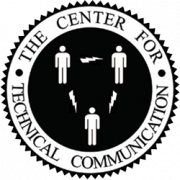Today, most in-house designers are well-versed in digital marketing creative and execution. This narrow skillset can create challenges for marketing teams when direct mail is added to the mix. If the principles of digital design are applied to direct mail, a mail program will likely fall short.
Many clients we speak with are actively marketing in digital channels, investing significant time, budget, and resources on developing campaigns. Over time, digital’s growing costs and diminishing ROI become clear, and direct mail becomes an enticing option. But going from the screen to paper isn’t as straightforward as it may seem.
Companies looking to test direct mail are often seeking a partner to help with the strategy, data, production, printing, and analysis. But regarding design, their preference is to have their digital designers lead the creative. Sometimes it’s to save budget, and other times it’s to maintain control of brand standards. However, this can set the client’s design team, and the mail program, up for failure.
Although they share some basic principles, direct mail design is a different creature. Understanding the fundamentals is critical when making such an expensive commitment. We’re sharing some of the most important direct mail design elements and how to approach them like a pro. Above all, always remember to whom you’re speaking and what you want them to do. Your target audience’s needs and wants will help guide you.
Format
The form chosen for your campaigns can determine whether your mail gets opened or dropped into the recycling bin. But how do you choose the right format? Consider your product or service—is it complex? Does it require ample information to convey its features and benefits? A letter package may be the right vehicle. Do imagery or graphics help tell your product’s story? A self-mailer could help entice your audience. At Gunderson Direct, we recommend an Always-Be-Testing mindset for regular mailers. Sending more than one format to portions of your list is the best (and only) way to know the most effective “control” format for your business.

- Envelopes matter
Envelopes have power. It’s true. In fact, we believe in the power of the envelope so deeply we have an article dedicated to the topic here, and we encourage you to read it. The envelope should not be an afterthought.

- Printing
The quality of your piece is a reflection of your brand and your message. In direct mail, sophisticated mailers use a number of techniques—from personalization and slick finishes to fake smudges and handwritten fonts. No matter your chosen tactics, select a reputable printer that can produce your piece accurately. Again, going from screen to paper can be tricky. Work closely with your printer to ensure your piece will reproduce as you intend.

Copy & Content
What you communicate should resonate with your audience and motivate them to act. Content hierarchy and messaging clarity are key to getting responses. Focus your message by speaking directly to your target. Highlight challenges, needs, or interests they may have and how your product can fulfill them. Headlines should stand out and grab the reader’s attention. Sidebars and highlighted copy can elevate offers and features or reinforce benefits. Make the call-to-action prominent—readers need to know what you want them to do and how. Long-form or descriptive copy is the workhorse of direct mail and should leave the reader with little to no questions. Ample information is one reason that those who respond to direct mail are often highly qualified leads, and most likely to convert.

Imagery
Photography and graphics can be evocative or informative. Your selected imagery depends on your brand, your product, and what you want your audience to understand. Evocative imagery can reflect lifestyles or emotions that may connect with your audience, or simply provide context about what your company does or is offering. Graphics and charts, when executed well, can provide proof points or make comparisons with competitive products. Always use quality imagery that is high resolution—print shows every flaw.

Inserts
Inserts serve many functions and come in a variety of forms, including buckslips, brochures, tip-on cards, magnets, and other tchotchkes. These devices are used to highlight reasons to believe, act as a keepable, or provide ample information that is easy to save and reference. If you choose to use an insert, it should feel purposeful. As a bonus, these additions can thicken a mailer and pique the interest of the envelope’s recipient.




 Mike Gunderson
Mike Gunderson

















